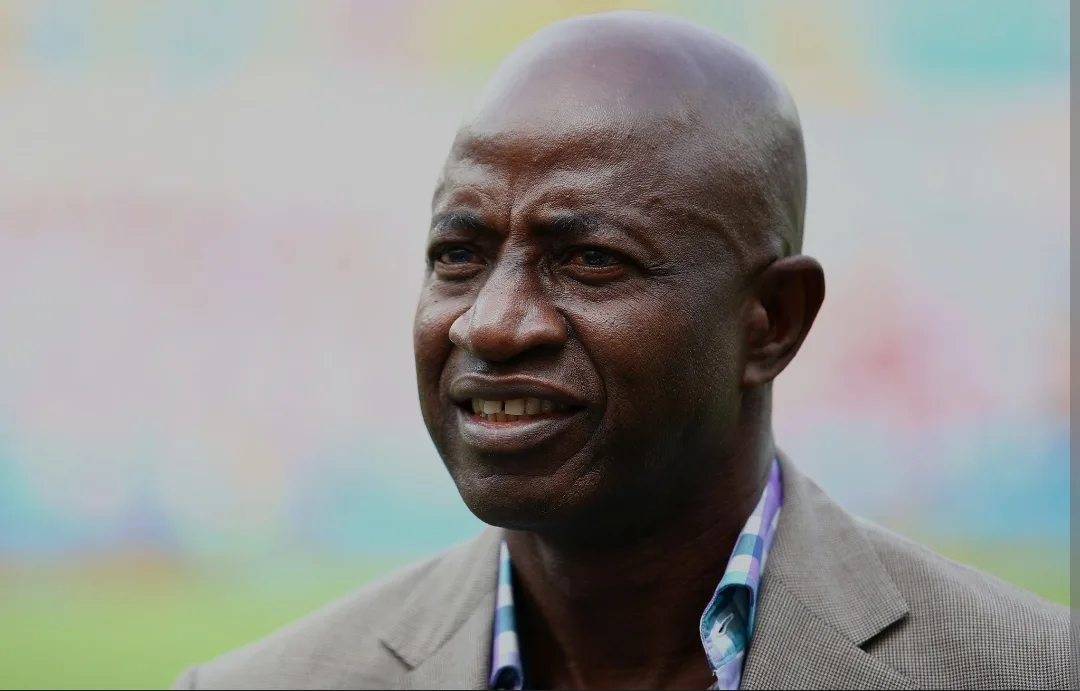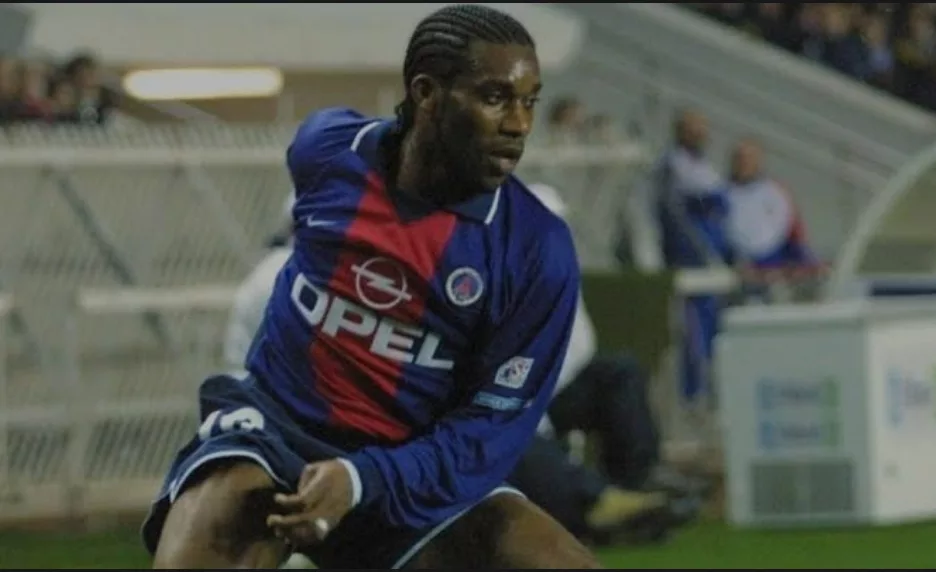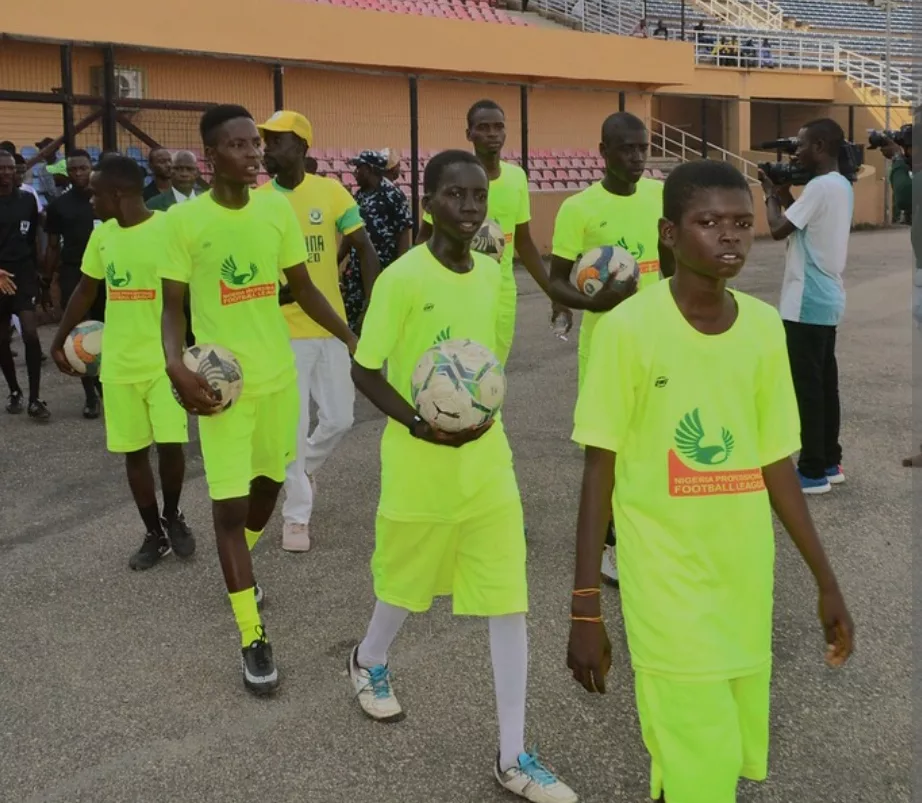Football (Soccer) is one of the oldest sports, however, its origin is not very certain; and it’s widely played on Nigeria and other countries of the world.
Countries such as England, Ireland, and Italy have claimed the origin of Football. It is known, that animals bladder had been used to play a game like soccer in the street of England at the very beginning. But, English monarch at that time saw the game as very rough and as a threat to archery. So it was consequently banned in England in 1314.
Football later became very popular in English school. And in 1863 the English football association was formed. Also in 1904 the federation international de football (FIFA) was also formed.
Also read: List Of Top 5 Richest Super Eagles Players In The Last Decade
These developments accelerated the growth of the sport around the world. Football (Soccer) must have been Introduced to Nigeria through our early contacts with the British missionaries. Also, and colonial adventure. Football (or soccer) is known to have been played in Nigeria since the turn of the 20th century
FOOTBALL AS A GAME IN NIGERIA
Football is played by eleven players on each side. And these are the goal keeper, two defenders, three midfielders, and five forward consisting of the outside right, the outside left, inside right and inside left players and one center forward. And the purpose of the game which is of 90 minutes duration is to score goals. Goals can be scored by players when the ball cross the goal line between the goal posts.
A game is started from the center circle by a push forward or backward as the case may be. During the course of the play in a regular game, a team is allow a maximum of three substitutes. In a friendly match, however, as many substitutes as possible may be agreed upon by the two teams. With each half of the game lasting for 45 minutes with 10-15 minutes interval
FACILITIES AND EQUIPMENT NEEDED IN FOOTBALL
1 The goal post: The goal posts can be made of wood or iron. Each post is 2.44m and 7.32 m wide. Each post should have a net at the back fastened to the upright and cross bars by the use of hooks
2 The Field of play: Soccer is played on a rectangular, grassy, and flat surface. It can also be played on modern synthetic field. The length of the pitch is between 101 -110m, while the width ranges from 46.91m. Also the field is divided into two by a center line; 16.5m from the center line is a mark indicating the penalty area within which is a penalty spot. The length of the field is referred to as the touch line while the width is the goal line. At the end of each goal line is the corner kick spot.
Also read: Reason Why Villarreal Dropped Super Eagles Samuel Chukwueze From Pre-season Squad
SUMMARY OF THE RULES OF THE GAME OF FOOTBALL IN NIGERIA
The rules of the game are as follows:
Dimensions of the pitch.
Positions of the players
The players position are usually identified as follows:
Goalkeeper
Right full back
Left full back
Right half back
Center half back
Left half back
Outside right
Inside right
Center forward
Inside left
Outside left
Starting the game of football
The referee tosses a coin for the two captains. The winner of the toss has the option of starting play or choice of end. Having chosen side or the option of starting play, all players must be on their side of the field. Only then the game is started with the referee’s whistle. And most games are started with a gentle pass or kick from the center.
Duration of the play
A game lasts for a duration of 90 minutes divided into two equal halves of 45 minutes each. Also with an interval of 10-15 minutes is allowed for rest.
Scoring
A goal is scored by any player in the field of play. And a goal is scored if the ball is played across the goal line between the goal post and the cross bar. Each time a goal is scored, play is started again from the center circle.
SUBSTITUTION AS PART OF FOOTBALL
Each team is allowed a maximum of two substitutes in competitions and international matches. But in friendly matches a team could make any number of changes.
Offside
A player is in an offside position if he is nearer the opponent’s goal line than any of the opponents at the time the ball is contacted or played. However, exceptions are as follows a player cannot be offside in his own half of the field.
A player is not offside if there are up to two players between him and the goal line.
Also a person cannot be offside during a throw-in, a corner kick, referee’s drop ball, or a goal kick.
Officials found in football
In each competition or match, there are three field officials and one table official. The field officials are the center referee who is the chief official of the game, and two linesmen.
Kicks
There are five main kicks in the game, namely:
Free kicks
Penalty kicks
Corner kicks
Place kicks
Goal kicks
FREE KICKS
A free kick is awarded if a player charges or jumps on an opponent from behind or pushes, holds. Hits or plays the ball when the goal keeper is already in possession of it. A direct free kick is awarded for any of these infringements. For dangerous play, obstruction or where a goalkeeper takes more than four steps before kicking the ball out, and indirect free kick is awarded.
Also read: The Function And Structure Of Cardio-Respiratory System During Football Exercise
PENALTY KICK IN FOOTBALL
A penalty kick is awarded for any of the offences that attract direct free kicks if committed inside the penalty box by a defending team. For a penalty kick to be taken, all players except the goalkeeper must keep away from the penalty arc. The goalkeeper must also remain stationary on the goal line until the kick has been taken. A rebound from the penalty kick should be touched by another player before it is touched again by the player who took the penalty kick.
It should be noted that if the goalkeeper moves before the kick is taken. Then the kick is retaken if no goal is scored. If the goalkeeper moves but a goal is scored, the goal stands. If any player of the defending team violates the rule and a goal is scored. It counts; otherwise, the kick is retaken.
CORNER KICK AS PART OF FOOTBALL IN NIGERIA
A corner kick is awarded if the ball is touched by a member of the defending team before it crosses the goal line.
Goal kick: A goal kick is taken if a member of the attacking team plays the ball across the opponent’s goal line outside the goal post.
Place kick. And a place kick is used to restart play at the center of the pitch if a goal is scored, after the interval, and at the beginning of the game.
THROW-IN AS PART OF FOOTBALL IN NIGERIA
A throw-in is the process of using the hands to put the ball into play if it crosses the touch line to out of bounds position.
And a throw-in is taken by any member of the team to whom it is awarded. If two teams are playing, say, team ‘A’ and ‘B’ takes a throw-in. a throw-in must be taken from the spot at which the ball crosses the touch-line. For a throw-in to be good, the thrower must remain stationary and release the ball from behind the head.
Also, goal cannot be scored direct from a throw-in without any player touching the ball.
FUNDAMENTAL SKILLS OF FOOTBALL IN NIGERIA

Trapping
Trapping is the process of stopping the ball in order to gain control of it. The ball can be trapped in the following ways:
Using the sole of the foot. To trap a ball with the sole of a foot, the ball is raised above 15.2cm from the ground with the toes raised slightly bent. The ball is stopped by the ‘V’ formed by the sole of the foot and the ground.
Using the shin. To trap the ball by use of the shin, the player allows the ball to move close to the legs and bends his knee slightly so that the shin is used to wedge the ball to the ground.
Using the side of the foot. The foot is turned outward and inward with the knees slightly bent. The side of the foot is kept at right angle to the ball. And as the ball touches the side of the foot; it “gives” slightly to control it.
And using the instep. The instep can be used to trap a ball in the air. Raise the nleg up and bend the knee at 90ᵒ. As the ball bounces on the step, the leg “gives” backward to control the ball. In a similar manner, the ball can be trapped with the thigh. In both cases, the legs must be relaxed.
Using the chest. The chest is brought out with the hands slightly raised in a forward-sideways position to maintain balance. The legs are slightly apart. And as the ball makes contact with the stomach , it gives in a forward to control the ball.
HEADING SKILLS IN NIGERIA FOOTBALL
Heading is the act of playing the ball with the head. And it is used for playing high balls which cannot be played with the foot or the body. Importantly, the part of the head used to head the ball is the forehead. And when the ball is approaching the header leans backward and moves forward again to contact the ball with the forehead. The legs are about 30.5cm apart. And the hands are slightly raised in a forward, sideways position for balancing. Also the ball can be headed backward, forward or sideways. Heading can be used to score, make a pass, or clear the ball.
Passing
Passing is the process and means of giving the ball to another player. And a Passing can be done with the inside and outside of the foot, the heel of the legs, or the sole of the foot.
There are different types of passes namely; the through pass, the square pass, a lob pass and the wall pass. These kind of passes can also be long or short passes. A through pass is used to push the ball through the opponents to a team mate in a forward position.
A square pass is one squarely given to a team mate on the same line with the player in possession of the ball. And a wall pass is a pass given straight to a team mate so that he makes an immediate return pass. A lob pass is a looped pass to a team mate at a short distance from the giver. And to keep a pass on the ground, the player leans over the ball and places the free leg beside the ball in order to execute the pass with the inside of the foot. Also the hands are used to maintain the stability of the player.
Dribbling
Dribbling is the process of keeping control and possession of the ball by applying gentle taps. And kicks with the inside and outside of the foot alternatively or in combination. And a player can dribble in order to make a pass or take a shot at the goal.
SHOOTING SKILLS IN FOOTBALL
Shooting is the act of putting the ball into the goal in order to score. And a proper shoot can be taken with the instep by:
Leaning over the ball
Placing the non shooting leg beside the ball; concentrating on the play; and
Using enough force on the ball
Kicking
Kicking is the means of moving the ball to some distance on the field. In order to kick a ball, approach it from a short distance. Place the free leg beside the ball, swing the kicking leg backward and drive it forward to kick the ball. The kicking leg continues the swing forward as a follow-through. If the ball is expected to fly high, there will be no need to lean on the ball when the kick is executed. A kick can be executed using the inside of the foot or the in step.
The volley kick
The volley is the technique of kicking the ball in the air, using either of the legs. Plant the free leg on the ground, pivot on it and contact the ball in the air with the in step. And at this point, the knee is over the ball. The body is also properly placed in a balanced position. And when the ball is contacted, the volleying leg continue the turn until the body is facing the direction of the volley. Also, remember that the volley is approached from the sideways position.
When a volley is taken soon after it bounces off the ground, it is known as a half volley.
Juggling
Juggling is the technique of keeping the ball under control in the air by using the foot, the thigh, head, or chest. The player who is juggling the ball must concentrate and be properly balanced.
Tackling
Tackling is the technique of taking the ball away from an opponent. Also tackling involves intercepting the opponent and dispossessing him of the ball. The tackling player should be timely and accurate in his judgement, so that the opponent does not invade his tackle.
Tackling can involve a gentle attempt to dispossess the opponent of the ball, or a full and forceful blocking of the opponent. Also a defender can also use what is called the sliding tackle. When that happens, a defender sweeps the opponent and the ball from a sideways position.
The sliding tackle becomes necessary if an attacker is trying to beat the opponent by going ahead of him with the ball.





